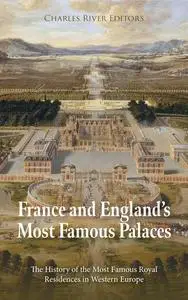France and England’s Most Famous Palaces: The History of the Most Famous Royal Residences in Western Europe by Charles River Editors
English | December 21, 2023 | ISBN: N/A | ASIN: B0CQS5VTC8 | 356 pages | EPUB | 77 Mb
English | December 21, 2023 | ISBN: N/A | ASIN: B0CQS5VTC8 | 356 pages | EPUB | 77 Mb
When people think of the British Royal family, and more specifically where they live, the first image that often pops into mind is that of stately Buckingham Palace, with its changing of the guard and the occasional royal coach leaving or entering. Others may think of the royal country estate of Windsor Castle, a favorite of both Britain’s longest-reigning and second longest-reigning monarchs. And there was a time when both royal residences played second fiddle to a much better known home, the elegant Kensington Palace. In his multi-volume work, Old and New London (1878), Edward Walford wrote, “It has often been said by foreigners that if they were to judge of the dignity and greatness of a country by the palace which its sovereign inhabits, they would not be able to ascribe to Her Majesty Queen Victoria that proud position among the ‘crowned heads’ of Europe which undoubtedly belongs to her. But though Buckingham Palace is far from being so magnificent as Versailles is, or the Tuilleries once were, yet it has about it an air of solidity and modest grandeur, which renders it no unworthy residence for a sovereign who cares more for a comfortable home than for display.”
Like many royal residences, Kensington began its life as a large private home, and it was only after a king, or in Kensington’s case, a king and queen, took notice of it that it was expanded into the size and grandeur that they display today. Even this work was not the product of one major overhaul but of several, spread across decades of changes in architecture, interior design, and even technology. King William III purchased Kensington Palace in the early years of his reign, less than three short decades after the Stuarts returned to the throne, and he and his queen were the first monarchs to move the British court there. Later, his successors became more attached to the palace, and by the time King George I, the first king from the House of Hanover, came to the throne, Kensington was considered the best place for the king and his family to live.
For the French, and those who study their history, Versailles is a symbol of, as Charles Dickens once put it, “the best of times…the worst of times.” It was here that the Sun King, Louis XIV, built a palace worthy of a great nation during a time when peace was, at best, short-lived. It was at Versailles that Russian Tsar Peter the Great studied the palace’s architecture and gardens so that he could recreate them in his home country. Indeed, the greatest minds and artistic geniuses of the later stages of the Renaissance came to Versailles to build and paint, and it was here that Madame de Pompadour and her successor, Madame du Barry, used their wit and beauty to charm a king into doing their bidding.
France, like all European countries, has had its fair share of palaces over time, but none suffered the rise and fall of fortune like the Tuileries. Built by a widow with a flair for architecture, it grew for more than a decade, along with the royal family that it housed. Then, during the French Revolution, it fell from grace with that family and even became a sight of execution, its famous gardens providing the background for the infamous guillotine. Though the French Revolution came to a close at the end of the 19th century, the revolutionary spirit remained alive in France, and with it the desire to overthrow whatever government happened to be in power. With the ruler living at the Tuileries, it became the symbol of the government, so in 1830 and again in 1848, crowds attacked and pillaged the palace. While it survived these two attacks, it was not so lucky in 1871, when a mob finally burned it to the ground.



